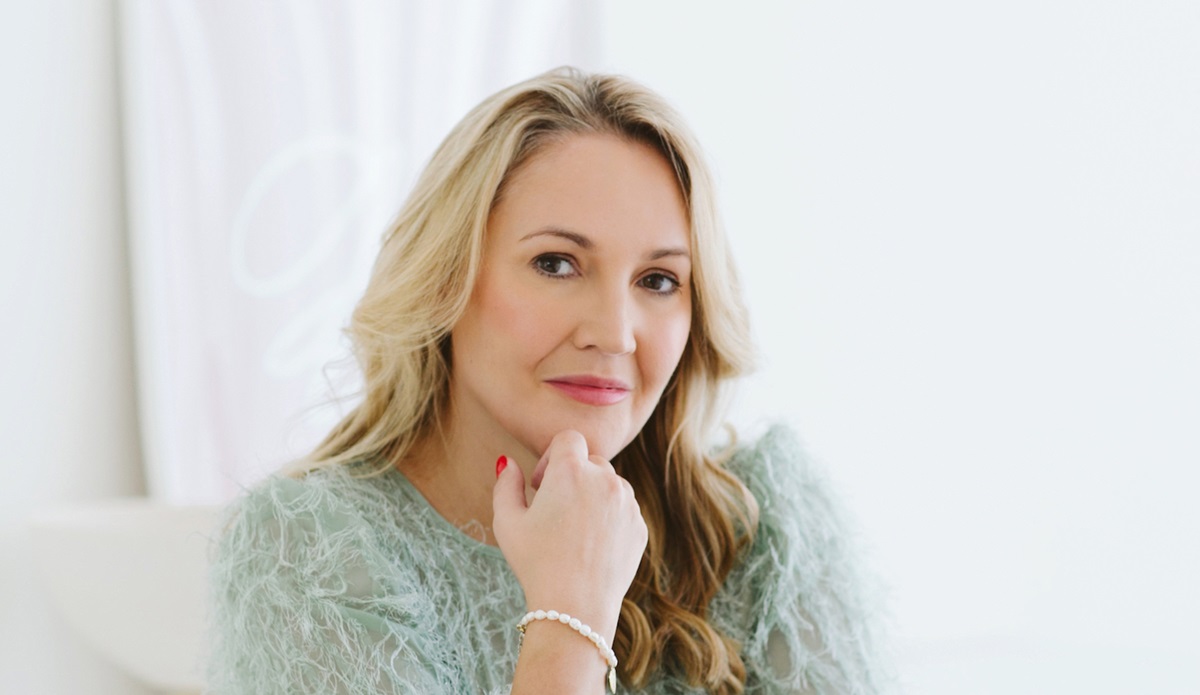Natasha Hatherall-Shawe, founder & CEO of TishTash, talks about her journey as a PR and communication professional and how she achieved much more than ever dreamed as an entrepreneur.
What inspired you to pursue a career in PR and communication entrepreneurship?
I did actually fall into my career in PR and communications, like many of us do, it seems. I had always planned to be a psychologist, and this was what I studied at university.
Can you share a pivotal moment or experience that shaped your journey in this field?
I was sitting at my desk where I was studying for my PhD in consumer behaviour (whilst also lecturing part-time in marketing). I remember so vividly a feeling of panic that this wasn’t what I wanted to do with my life. I was inspired by the academics who lived and breathed their research and the academic world, but I knew it wasn’t for me. I left academia, got a place on a graduate scheme for one of the big global communications agencies and the rest is history as they say.
How do you approach building and maintaining relationships with the clients?
Client/agency relationships are very symbiotic. Building trust is vital for being able to share counsel and expertise. KPI’s, deliverables and reporting is important, but we always aim to go the extra mile in meeting and exceeding our clients objectives. Constant and clear communication is highly valued by our clients, who all know that we care and are doing our best to achieve their individual plans for success.
What strategies do you find most effective for crafting compelling PR campaigns?
Starting with a clear objective. Sometimes, a client needs guidance here, allowing us to look at data, business needs, strategic insight and creativity. Once we have that nailed, we will plan the most effective mediums across the campaign, including seasonality and more and plan the optimum rollout strategy. There is absolutely no one-size-fits-all for a compelling campaign – which makes every client unique, and every month, too!
How do you balance creativity with practicality when developing communication strategies for clients?
You need that clear objective – sometimes it’s an obvious ROI or sales focus, and sometimes it’s brand or profile building. Timing is everything, so a creative idea can and should sometimes be postponed until it makes sense for the client’s strategic plan – this is the practical part. We do have to remind clients that this is PR and not ER – results can absolutely be achieved speedily, but we have to work on the basis that visibility and key coverage do not happen overnight.
What advice would you give to other women aspiring to succeed in PR and communication entrepreneurship?
Women in leadership need more role models, and despite PR and comms being a very stressful industry, it is perfectly possible for women to combine this with a solid life balance. However, like any entrepreneurial venture, you must be prepared to work hard. Not every day is events or shoots, there is admin, HR and financials to be taken care of too. Start from a place of knowledge and expertise, and never be afraid to ask for help – you will need a strong team to support you!
How do you prioritize tasks and manage your time effectively in a fast-paced industry like PR?
PR is not known as one of the most stressful industries to work in for nothing. Organisation and a strong team is the key to success. Agility, flexibility and being able to prioritise like a demon are essential when you effectively have to do two days of work in one – you have your ‘to-do- list and then whatever the day throws at you too. A laser focus on deadlines and truly what cannot wait is vital.
What role do you believe diversity and inclusion play in the success of PR and communication efforts?
PR and communications are about telling stories and disseminating crucial information to the world – a world that includes every colour and creed. ‘Knowing your audience’ is one key factor to PR success and it would be absurd not to have a diverse team or outlook that represents language, nationality and culture to be able to represent our clients fully and enable the best chance at success. Diversity and inclusion are not ‘nice to have’ for a business – they’re an essential benefactor to the bottom line – this is a fact.
How do you leverage technology and digital platforms in your PR and communication strategies?
Every day – we have a large social media and content department at TishTash for one, but separately, we are now a ‘mobile first’ society from a coverage and messaging perspective, and we have to leverage this into every strategy. Alongside internal administrative tools for productivity, the main way we utilise tech is to be completely on top of platforms, trends and distribution models in an increasingly fast-paced world, where there is something fresh almost hourly.
What ethical considerations do you keep in mind when working on PR campaigns?
This is very important. We see it less in the GCC due to cyber laws and similar, but we would not represent anyone or any business that did not align with ethical and moral values, both of the nation and also our agency. Truth, authenticity and transparency are more important than ever in 2024 – for the consumer, who demands it. To this end, projects, values, messages and more that are not entirely transparent or ethical or simply exaggerating abilities and credibilities are an absolute no.
How do you measure the success of your PR efforts, and what metrics do you find most valuable?
The KPIs and measurement elements of PR are very unique to each client. The traditional model of pieces of coverage and AVE are outdated, but we still find clients requesting the $ value. These days, the share of voice measurement, impressions, backlinks, DA for outlets, and social media engagements all linked to coverage and events are far more important indicators – and of course, direct sales or CTAs. This is all dependent on each particular campaign and client objective.
What are some common misconceptions people have about the PR industry?
That it’s easy and glamorous! PR and comms success is hard work to do well. It’s also not about having personal relationships with journalists either. These relationships are important, but nobody will cover a non-story or non-event irrespective. PR covers so many daily factors and the behind the scenes looks very different to the end result of a cover shoot or a lovely event launch.
How do you handle crises or negative publicity for clients?
Our approach is always bespoke but follows a certain set of guidelines. Number one is to have a plan in place that anticipates a variety of scenarios before they may even happen. When or if they do, this leaves all in a strong position to mitigate any ongoing risk or negativity. The key many get wrong is the importance of transparency, which is different from admission. Even in the GCC, we are seeing many brands and businesses embrace this approach, as silence or ignoring is no longer acceptable to the public. They are going to ‘talk’ about you regardless – you may as well arm them with the facts first.
Can you share some tips for effective storytelling in PR and communication?
Your messaging and storytelling need to be clear from the start and may take time to craft. People no longer wish to be ‘sold to’, and publications will not cover or print ‘advertorials’. This has to be accepted by any client we work with. If your positioning and messaging is unclear, how can you expect the public or stakeholders to know who you are, what you do, or how you can help them? Be clear, be relatable but most importantly, really ‘know’ your target audience before you even start. Your comms strategy should be laser-focused on the people you serve.
What do you envision for the future of your PR and communication entrepreneurship venture?
We’ve achieved far more at TishTash Communications than I ever dreamed of in 12 years, opening 3 offices across the globe, winning amazing awards and accolades, and representing dream brands and personalities across earned media, social media and events. Now, with a staff of 60+, I envisage more of the same, yet in a faster-moving landscape. We adapt constantly across moving trends, the media landscape and the move towards more visual and audio output, for example. Working with global brands within our beauty and wellness niche across both consumer and corporate sectors has cemented us as market leaders, and we hope to build on that success even further.





